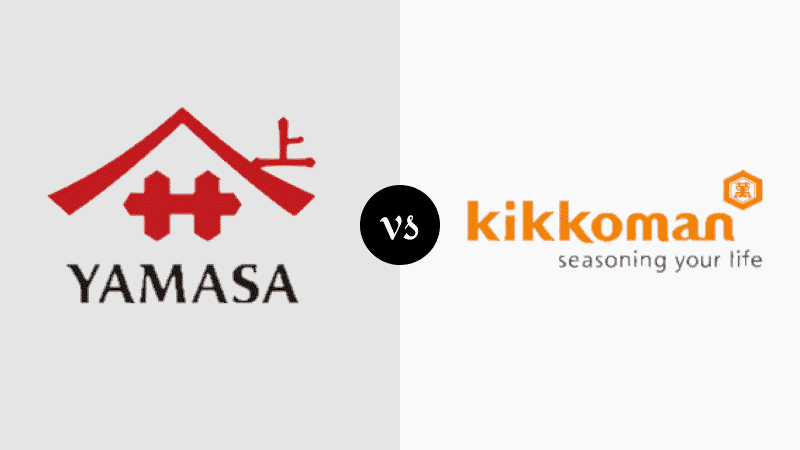
DISCLOSURE: This post may contain affiliate links, meaning when you click the links and make a purchase, I receive a commission. As an Amazon Associate I earn from qualifying purchases.
Spices, sauces, seasonings, and personal secret ingredients add something extra to food, lift flavors, and elevate beloved meals to all-new taste sensations.
Numerous dishes call for soy sauce as an integral ingredient. A splash or two of soy sauce not only finishes off countless meals perfectly, adding the ideal finishing touch, but it also helps meat marinade better.
There are two giant brand names well-established and trusted around the world when it comes to classic soy sauce.
Kikkoman has been a market leader for many years, with Yamasa not far behind popularity and widespread availability.
Both are top Japanese manufacturers of fine seasoning and soy sauces, offering multiple varieties and a range of tasty products. Between the two varieties, they’re quite similar, but one is noticeably saltier.
Despite the close likeness in flavor profile and consistency, there are slight differences between these two quintessential soy sauce brands.
We’ll be taking you through a look at what makes each a distinct favorite, pointing out all the subtle variations.
Let’s take a close look at Yamasa vs Kikkoman so that you know which out of these two high-end sauces are best for you.
What Is Kikkoman?
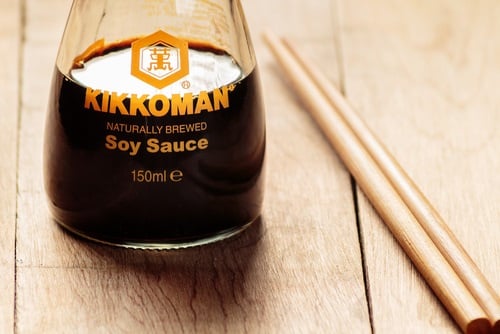
As one of Japan’s leading food manufacturers, the Kikkoman Corporation was founded over 100 years ago in 1917 but originating much earlier than this.
The esteemed Mogi and Takanashi families amalgamated eight family-owned businesses in operation since at least 1603.
Kikkoman has been manufacturing soy sauces, mirin, sake, seasonings, and a range of other beverages and pharmaceuticals for over 400-years. Soy sauces are the flagship of Kikkoman’s expansive range.
Naturally brewed using only the highest quality wheat, soya beans, pure water, and salt, the ever-popular soy sauce from this leading manufacturer is completely free from additives.
[amazon box=”B003XDIU30″]
What Is Yamasa?
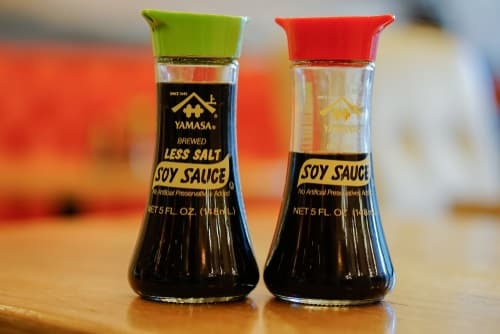
The Japanese Yamasa Corporation was founded in 1645, making them 42 years younger than their competition, Kikkoman.
Despite being founded later, Yamasa was the first to establish a soy sauce laboratory in Japan. Yamasa’s primary production focuses on high-end soy sauce and various food seasonings, showing less diversity than Kikkoman.
Yamasa deviates from all-natural ingredients, featuring several artificial flavors and additives. Unlike Kikko’s all-natural soy sauce, you can find a range of flavored variations on the traditional recipe.
Expect to find top-quality soy sauces, sauces, marinades, rubs, and dressings available from Yamasa.
[amazon box=”B008530FCM”]
Yamasa vs Kikkoman: What’s The Difference?
| Yamasa | Kikkoman | |
| Brewing Method | Traditional Japanese Honjozo Brewing | Traditional Japanese Honjozo Brewing |
| Color | Dark Reddish Brown | Deep Reddish Brown |
| Consistency | Thin, Silky, Pourable But Slightly Thicker Than Kikkoman | Thin, Silky, Pourable |
| Flavor | Pungent, Tangy Umami | Smooth, Pronounced Umami |
| Preservatives | Zero Preservatives | Sodium Benzoate |
| Saltiness | Lingering Umami Overpowers Mild Saltiness | Slightly Saltier Than Yamasa |
| Considerations | A Grade Soy Sauce | A* Is The Higher Grade |
Most of us are familiar with the sauce known as shoyu, and both Yamasa and Kikkoman have been making the world’s finest Western soy sauce for roughly four full centuries.
You can rely on perfectly brewed soy sauce and exemplary products all around from both companies.
Furthermore, soy sauce has a bold, pervading flavor with distinct similarities between brands, making it rather difficult to tell the difference between Kikkoman and Yamasa’s premier salty liquid quality condiment.
Pay close attention to your palate, and you’ll pick up on slight differences in taste and saltiness like those from our Yamasa vs Kikkoman comparison.
Kikkoman – Top Soy Sauce Of 2020
The Kikkoman Corporation’s ongoing excellence and flavorful sauces make them no stranger to accolades. You’ll find Kikkoman topping more lists around the world in 2020 than any other soy sauce brand.
Here’s a breakdown of the pros and cons of Kikkoman soy sauce before we take a closer look at its main features.
Pros:
- Large quantity availability
- Kosher soy sauce
- Naturally brewed
- High-quality ingredients
- Distinctive, bold red-brown color
Cons:
- High salt content
- Added sodium benzoate
- Brewing Method
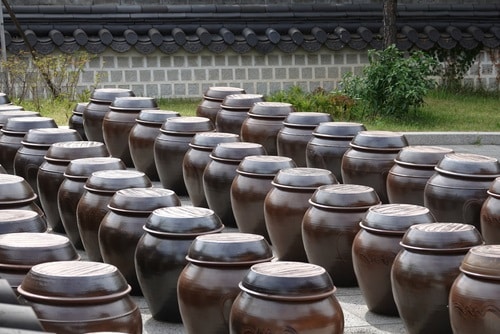
The Kikkoman Corporation uses a traditional Japanese brewing method called honjozo, detailed on their site.
Soaked soybeans and crushed roasted wheat are combined with the Kikkoman Aspergillus genus of Koji-mold forming Shoyu Koji.
After culturing and processing massive grain milling roller crushers, the mash called moromi is added to saltwater and then left to ferment in tanks.
After several months of fermentation, soy sauce is finally pressed from the aged moromi.
Kikkoman pours the liquid through multiple layers of three-fold cloths, allowing the power of gravity to clear the sauce before it is mechanically pressed for ten more hours.
The raw soy sauce is left to clarify for three days before the sediment and oil are separated away. Finally, Kikkoman’s soy sauce is heated and then bottled.
- Color
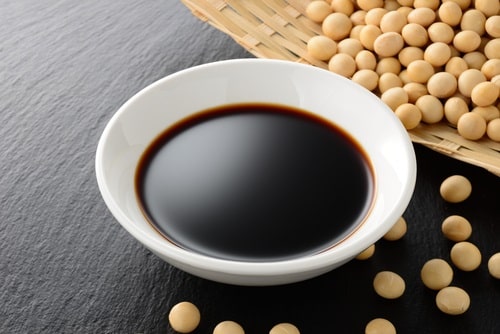
Kikkoman soy sauce carries a deep red-brown coloring with a degree of translucency. Kikkoman’s Naturally Brewed Soy Sauce is a dark Japanese soy sauce with a deep, red-orange coloring.
Without caramel coloring added, Kikkoman’s lacks the dark brown to black appearance of other sauces and instead shines a rich orange.
- Consistency
Thin but silky and pourable makes Kikkoman Naturally Brewed Soy Sauce contrasting to the sticky, salty malty Chinese soy sauces.
It is a dark sauce that is light enough in consistency to pour on just about anything without overdoing it.
- Flavor
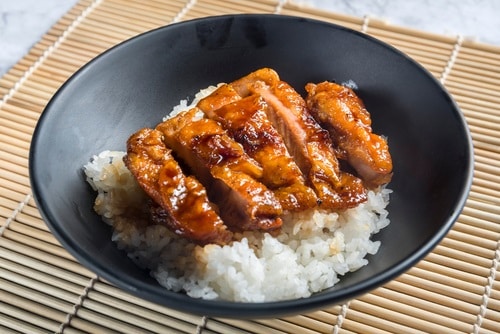
As a naturally brewed soy sauce, Kikkoman’s has an extremely smooth, mellow flavor. The saltiness is prominent but subdued, coming through as a deep lingering umami flavor that highlights the taste of the sauce.
It lacks the slightly sweet aftertaste of competing soya sauces, especially those of the Chinese variety. Instead, it replaces it with a fullness that can’t be matched by salty, savory, or sweet additives.
- Preservatives
Sodium Benzoate is used as a preservative in Kikkoman’s Naturally Brewed Soy Sauce. If you prefer saltiness over tangy tastes and sweet undertones, Kikkoman’s is the sauce for you.
- Saltiness
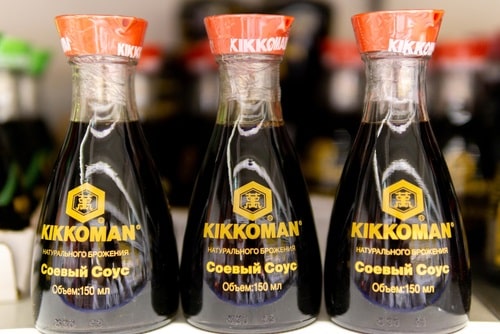
Kikkoman’s Naturally Brewed Soy Sauce is saltier than Yamasa Grade “A” Soy Sauce.
The saltiness isn’t as intense as sauces using artificial additives but instead has a pure, pervading umami taste that replaces sharp, salty notes with tangy, savory flavor highlights.
- Considerations
According to global food grading systems, Kikkoman’s Naturally Brewed Soy Sauce is graded A*, which makes it a slightly higher caliber soy sauce.
Yamasa Soy Sauce – Grade “A” Soy Sauce
Yamasa is yet another popular Japanese soy sauce with exceptional flavors. Before we take a closer look at the notable highlights of Yamasa soy sauce, here’s an overview of the pros and cons:
Pros:
- No additives
- Strong, intense flavors
- Deep reddish appearance
Cons:
- Darker than traditional soy sauce
- Brewing Method
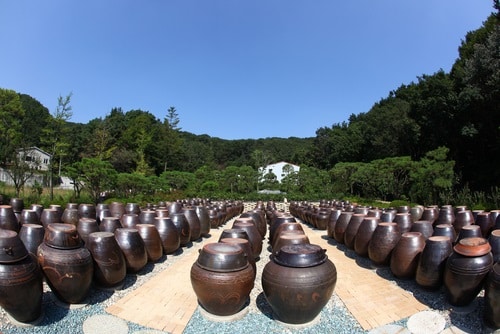
Yamasa’s homepage details the process for soy sauce production. The Yamasa Aspergillus genus of the fungus called Koji-mold is added to a mix of steamed soybeans and crushed roasted wheat.
After three days of culturing and ongoing further crushing in a Koji Muro mold culturing machine, the enzymes break down the soy and wheat into a slushy sauce called Koji.
After saltwater is added, the mash, now called Moromi, is dispensed into massive 264 gallons (20-kiloliter) tanks for fermentation.
Microorganisms, yeast, and enzymes ferment the mash into soy sauce over a period of months. As the sauce ages under strictly moderated conditions, flavor, color, and aroma improve.
- Color
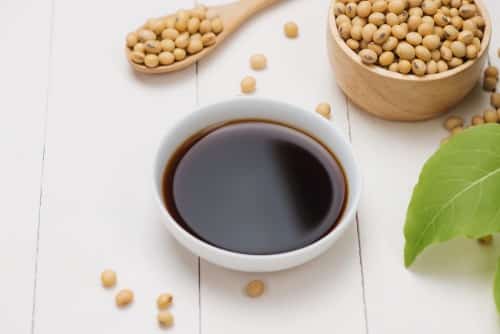
Yamasa has several products within their range, but their Honkaiseki Soy Sauce, the dark soy sauce utilizing double fermentation, comes with a deep, dark reddish-brown color.
- Consistency
Both Yamasa and Kikkoman’s soy sauces are known as Shoya sauces in Japanese, making them both translucent, quite thin, and pourable.
Yamasa’s soy sauce is the slightly thicker sauce between the two, with a rich silkiness and just enough stickiness.
- Flavor
Yamasa Honkaiseki Soy Sauce has a rich, complex umami flavor with pungent tanginess.
The mellower soy sauce delivers light sweetness in its mild intensity and lingering sourness in its flavor notes. Yasamsa trades off boldness for a slight but unmistakable sour-sweet aftertaste.
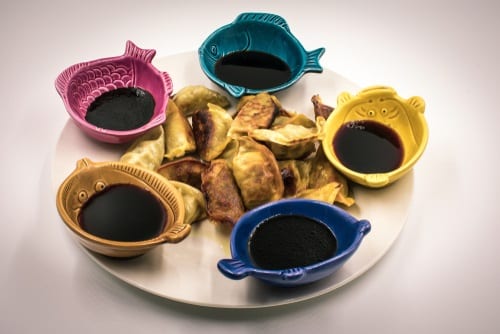
- Preservatives
Soybeans, wheat water, and salt are the only compounds used in Yamasa Honkaiseki Soy Sauce. Zero preservatives are featured.
- Saltiness
Kikkoman is the saltier sauce, but either can be used as a replacement for salt on most meals.
- Considerations
Kikkoman is the higher quality soy sauce by food grading standards, boasting an A* grading qualification.
To sum up Yamasa vs Kikkoman

If it had to come down to the technicality of grading alone, Yamasa’s soy sauces are graded A quality while Kikkoman comes in as A*, making it the better sauce.
However, if you’re after sweetness, Yamasa Honkaiseki Soy Sauce is the top recommendation between these two fine options.
We suggest both should be tasted so that you can experience the full flavor highlights of each rich sauce and decide for yourself.